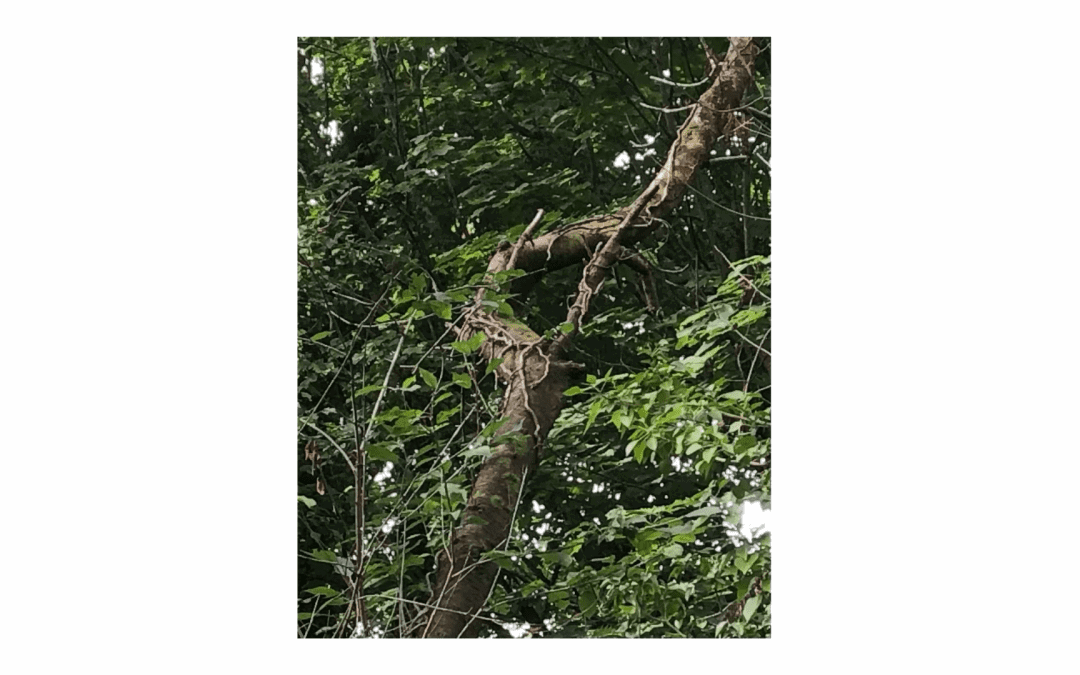I saw a tree trunk today, that appeared to have changed course during it’s growth. About a third of the way up, it had veered off at 45 degrees, straightened up again, carried on, veered back at 45 degrees, then continued on its original course. There seemed to be no obstruction it had gone around, but it gave the impression of having gone around something.
Perhaps it felt it would get more light by growing in a different direction, somehow realised it wasn’t working, and changed course back to the original one. I realise I’m projecting human thinking on a tree, but it’s the only way I can explain it.
Further along our walk we tried a change of course ourselves. On the map it looked as though we could avoid a steep climb by taking a different turn. We reached a private land, no public access sign, so turned back and continued on our original course. We went rather further than we had intended and reached Greenway, Agatha Christie’s house. We’d been there before, but it was good to revisit. I wonder if she changed course often during her writing. Looking at her bibliography, she seemed to change series quite often. The longest run of books in one series is nine Hercule Poirot books from 1935 to 1938. She was really churning them out then. I wonder if she changed course during the writing of a novel. Probably not, if she was writing more than two books a year. She must have planned her plot, identified her red herrings, and just gone for it.
I think having a series helps a writer a lot. You get to know your central characters really well. A bonus of writing historical fiction is that a large proportion of your other characters were real people that you can research. You don’t have to invent their quirks and character flaws, just research them, and think them through. I’m sticking with Sir Anthony Standen and his family for the foreseeable future. No changed course to a Marple or Tommy and Tuppence for me.

